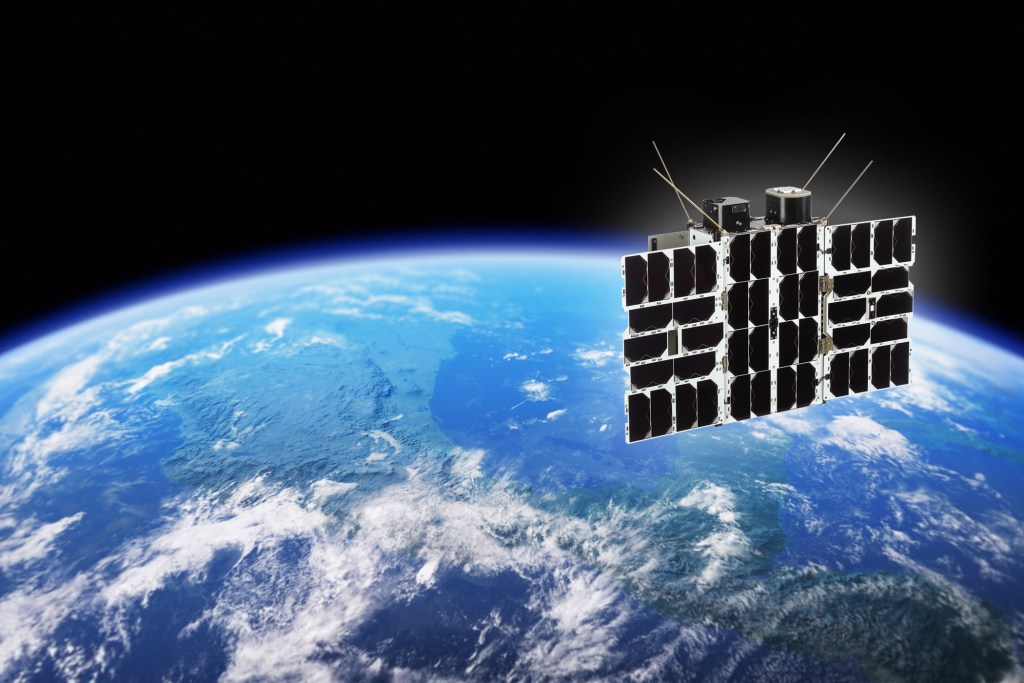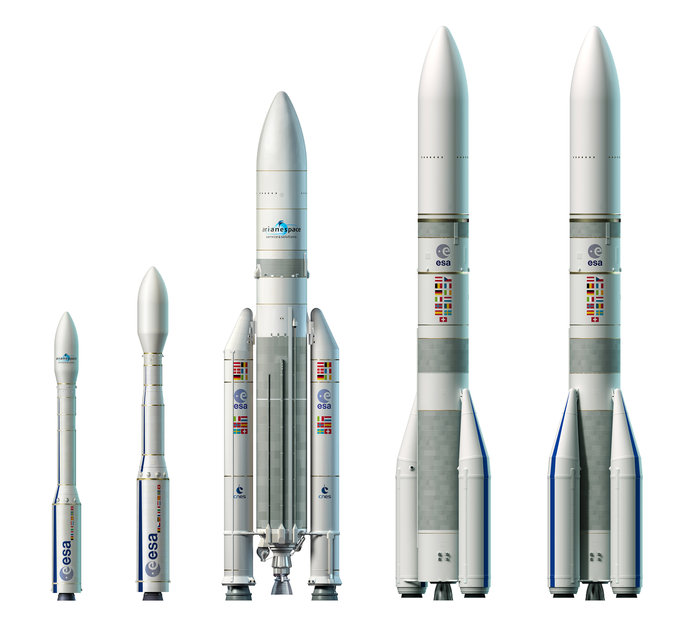Featured image credit: ESA/CNES/Arianespace – Photo Optique Video du CSG – S. Martin
Lift Off Time/Launch Window | April 29, 2021 – 01:50:00 UTC April 28, 2021 – 22:50:00 GFT |
|---|---|
Mission Name | Pléiades Neo 3, Flight VV18 |
Launch Provider | Arianespace |
Customer | Airbus Defence and Space – Intelligence |
Rocket | Vega |
Launch Location | ELV-1, Centre Spatial Guyanais, Kourou, French Guiana |
Payload mass | Main payload 750 kg (1,650 lb) Total payload 920 kg (2,030 lb) |
Where are the satellites going? | Sun-Synchronous Orbit (SSO), 550 – 620 km, local solar time on descending node (LTDN) of 10:30 Pléiades Neo 3 is going to a 620 km circular orbit at 97.89° inclination (altitude at initial separation 628 km) The rideshare payloads are going to a slightly lower altitude at 97,79° inclination (altitude at initial separation 613 km). |
Will they be attempting to recover the first stage? | No, this is not a capability of Vega |
Where will the first stage land? | The booster will crash into the Atlantic Ocean |
Will they be attempting to recover the fairings? | No, this is not a capability of Vega |
Are these fairings new? | Yes |
How’s the weather looking? | N/A |
This will be the: | – 1st flight of the Vega rocket in 2021 – 18th launch of a Vega rocket – 43rd launch from pad ELV-1 (formerly ELA-1) – 306th orbital launch from Centre Spatial Guyanais (any rocket type) – 35th orbital rocket launch of 2021 |
Where to watch | Official livestream |
What does all this mean?
Arianespace is launching its small-lift rocket, Vega, from its equatorial launch site in French Guiana. It is sending several satellites to a Sun-synchronous orbit (SSO). The main payload is Pléiades Neo 3, which is a high resolution Earth observation satellite. There are several smaller satellites that will deploy alongside the main payload. Descriptions of these appear later in this article.
What is Pléiades Neo 3?
Pléiades Neo 3 is the first in a pair of next-generation imaging satellites that will generate very high resolution Earth observation imagery. Its twin satellite, Pléiades-Neo 4, will launch on another Vega rocket in just a few weeks time.
Airbus Defence and Space has funded, owned, and operated the Pléiades-Neo program entirely on its own. The satellites have an imaging system that gives 30 cm resolution. This specific SSO orbit enables it to overfly a location twice every day.

Airbus describes the satellites as having defense applications, such as monitoring opposing forces’ positions. They also describe urban applications such as monitoring the effects of climate change or pollution, or to monitor emergency services response.
In addition, Airbus mentions the powerful use of the generated images to assist in map-making and map updating in up to 1:2000 scale.
All-Bravo, All-Charlie
These are a pair of 6U CubeSats that have been built by NanoAvionics. Their purpose is to test out a spectrometry payload that has been developed by Aurora Insight. This experimental payload is intended to demonstrate the function and performance of the spectrometer instrument.

In addition, there is a VHF “backdoor” radio receiver on board that has been designed by SpaceQuest. This is a security channel intended to give operators the ability to send administrative commands (such as “reboot”). This would be in the event of problems with the satellite or communication problems to the satellite through normal means.
These satellites were previously intended to be launched by SpaceX’s Transporter-1 rideshare flight.
EIRSAT-1
The Educational Irish Research Satellite 1 (EIRSAT-1) is Ireland’s first satellite. It has been designed and built by a team of students at University College Dublin. It is a 2U CubeSat and has 3 main on-board modules or experiments.
GMOD is the “Gamma Ray Module.” This is a very small sensor for detecting gamma rays, based on a Silicon Photo-Multiplier (SiPM). Conventional photomultiplier tubes are bulky and fragile, with an appearance similar to vacuum tubes used in radio equipment before transistors were invented. This new miniaturized sensor has been developed by SensL in County Cork.
Enbio Module (EMOD) is an experiment to investigate how certain protective coatings perform in space. The coatings in question have been made by ENBIO Ltd in Ireland. EMOD consists of two black panels and two white panels, which will be used to test heat management for future spacecraft.
Wave-Based Control (WBC) is a recently added payload. It will attempt to control the attitude of the spacecraft using the Earth’s magnetic field. This module had been developed by UCD’s School of Mechanical and Materials Engineering.

ELO Alpha
Eutelsat LEO for Objects (ELO) is a fleet of satellites from Eutelsat. They will offer global IoT coverage, enabling objects to exchange information, wherever they are in the world. This will include communication between ground objects and space objects.
Eutelsat intends that the constellation should have 25 of these nanosatellites on orbit over a 3 year period.
The first four operational satellites were reported by Eutelsat to be developed under supervision of Loft Orbital and Clyde Space.

Lemur-2
The Low Earth Multi-Use Receiver (LEMU) is a 3U (10 x 10 x 34.5 cm) CubeSat made by Spire in the USA. With a mass of less than 6 kg, these satellites are deployed to an orbit between 400 km and 650 km in altitude. They are expected to stay on orbit for about 2 years.

The satellites are designed to track shipping, aviation, and weather activity from space. In order to do this, they each have (as of July 2018) an ADS-B receiver on board. ADS-B allows them to pick up the position radio broadcasts from planes and shipping vessels.
Myriota 1, 2, 3
These satellites follow Myriota 7 that went up into orbit earlier this year on Rocket Lab’s They Go Up So Fast mission. Developed by the Australian company Myriota, their purpose is to provide IoT communications. The constellation will be built up to a total of 50 operating satellites.

These next three satellites have been built by Tyvak Nano-Satellite Systems to a 3U platform size.
NORSAT 3
This is a Norwegian satellite designed to assist with tracking of shipping vessels and maritime traffic in general. It features an onboard radar detector assisted by an Automatic Identification System (AIS) receiver.
This satellite is the third in a set of four that are planned. They are civilian satellites that will listen for signals in the frequency range mandated by the International Maritime Organization.

Vega Rocket
Arianespace considers Vega to be its small-lift rocket. Vega sits alongside its siblings, the heavy lift Ariane V and medium lift Soyuz. The rocket’s name comes from the brightest star in the constellation of Lyra. It consists of three solid motor stages with a liquid propellant upper stage on top, making four stages in total.
Built by the Italian aerospace company Avio, The rocket is 30 m (98 ft) tall overall, and has a diameter of 3 m (~10 ft) at its widest section. Its mass at time of launch is 137,000 kg (302,000 lbs). It can deploy a payload mass of 1,430 kg (3,150 lbs) to a polar orbit of 700 km altitude with 90° inclination.
Vega had one launch failure (VV15) in 2019 and another (VV17) in 2020. The anomaly on VV15 was found to most likely be due to a thermo-structural failure in the forward dome area of the Z23 motor. The failure on VV17 was confirmed in December 2020 to be due incorrectly connected cables in the rocket’s AVUM upper stage. This means that this flight is a “return to flight” mission.

Vega First Stage – P80
The first stage, known as P80, is 10.6 m long, with a diameter of 3 m. Its total mass at time of launch is 98,590 kg (217,350 lbs). It uses Hydroxyl-terminated polybutadiene (HTPB) for propellant. This is a substance that combines the fuel and the oxidizer together. The PSLV rocket flown by ISRO, and the M-5 rocket flown by JAXA, also use HTPB.
When all its propellant has been consumed, the remaining dry mass is only 7,330 kg.
The rocket motor burns for a duration of 110 seconds, and has a specific impulse (its efficiency) of 280 seconds. While burning, it generates an average thrust of 3,015 kN.
Vega Second Stage – New Zefiro 23
The second stage, called Zefiro 23, has a length of 7.5 m, and a diameter of 1.9 m. Its total mass at time of launch is 25,935 kg (57,180 lbs).
The rocket motor burns for a duration of 77 seconds, and has a specific impulse of 287.5 seconds. While burning it delivers an average thrust of 1,122 kN.
When depleted of fuel, the left-over shell has a mass of 1,935 kg.

Vega Third Stage – Zefiro 9
The third stage, known as Zefiro 9, has a length of 3.9 m and a diameter of 1.9 m. Its total mass at time of launch is 11,406 kg (25,146 lb).
This stage’s motor burns for a duration of 117.1 seconds, with a specific impulse of 295.2 seconds. During its firing, it generates an average thrust of 314 kN.
After its burn, the remaining chassis and nozzle have a mass of 906 kg.
Vega Fourth Stage – AVUM
The final stage of the Vega rocket, called AVUM (for Attitude & Vernier Upper Module), has a length of 1.7 m and a diameter of 2 m. This stage uses hypergolic propellants, specifically unsymmetrical di-methyl hyrdazine (UDMH) for fuel and nitrogen tetroxide (N2O4) as oxidizer.
The propellant mass on this stage is 572 kg. After burning, the remaining dry mass of the stage is 538.6 kg.
This stage’s engine burns for a duration of 723 seconds, with a specific impulse of 314.6 seconds. After this burn, it enters a coast phase for 37 minutes. Following the coast period, the engine will restart for a second burn. The second burn lasts for just over one minute.
After the second burn, the main payload Pléiades Neo 3 will be deployed. There is then another phase of coasting of 37 minutes, which will include two further engine ignitions. At this point the Small Spacecraft Mission Service on AVUM releases the additional payloads.
This will mark the end of the VV18 mission, after 1 hour and 42 minutes of total flight time.





Wait, so the first stage is a solid rocket motor? I don’t really understand
The three first stages are solid, the fourth and final stage is liquid fueled. What you don’t understand? How a solid motor works?